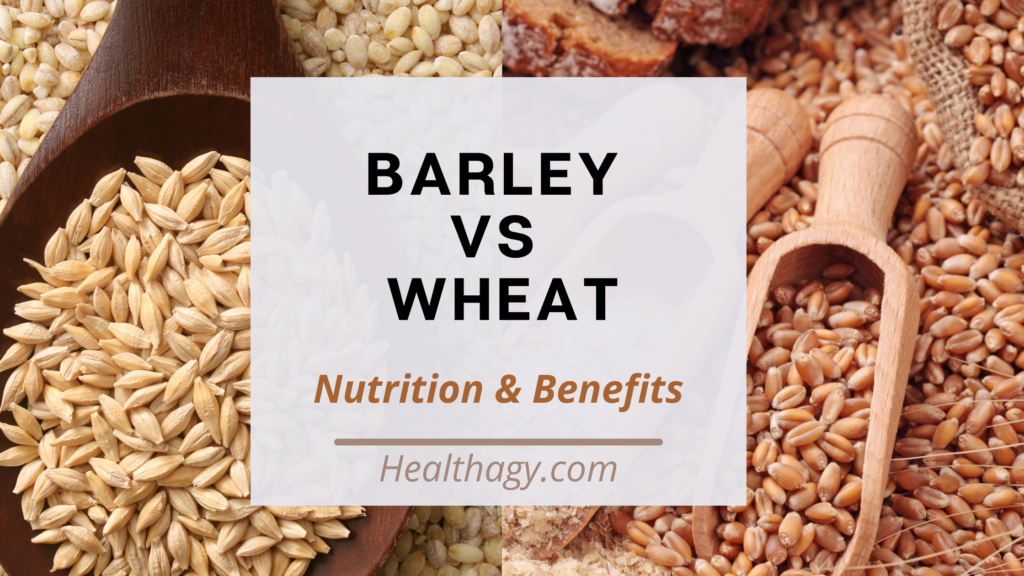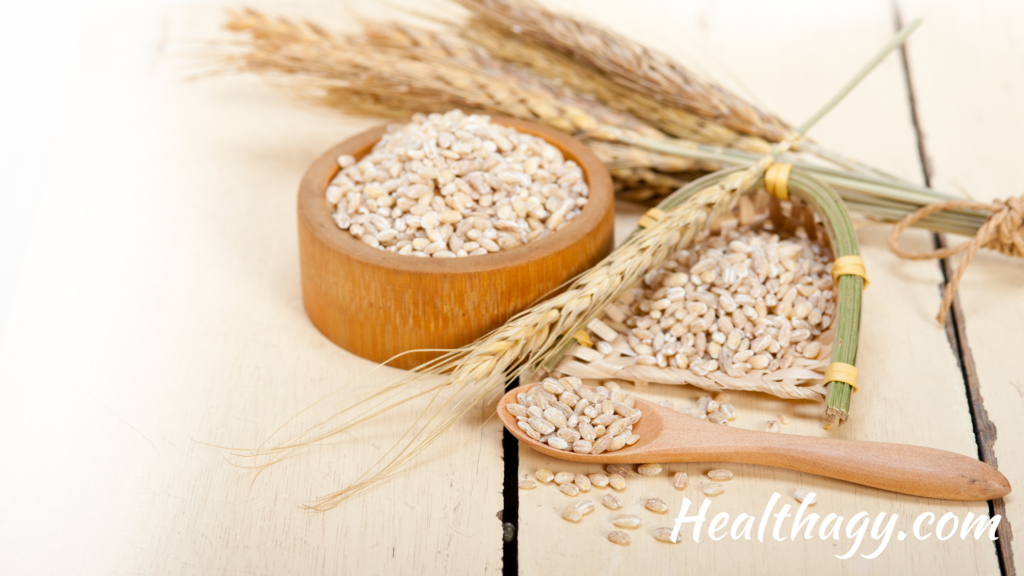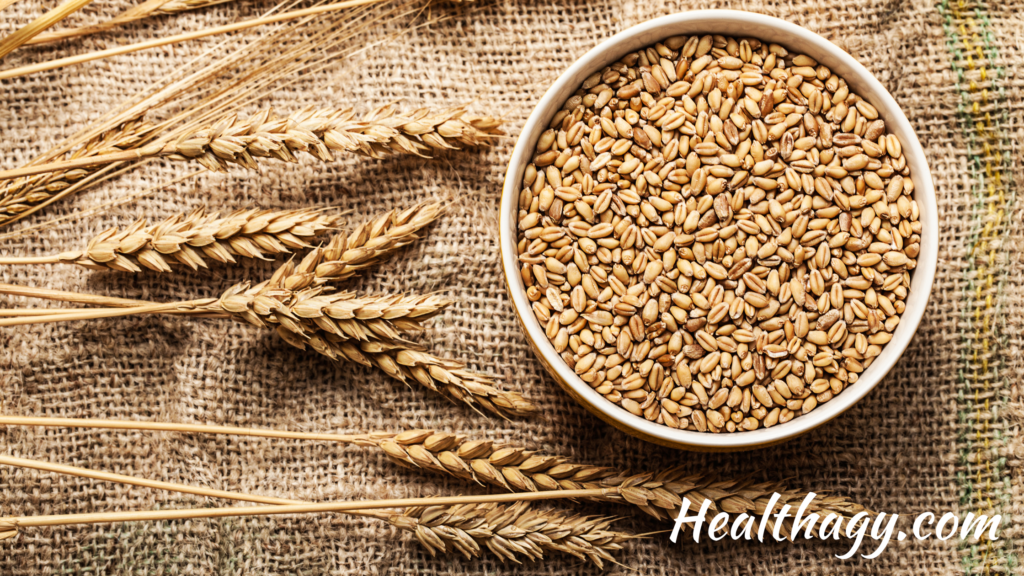
Whether you are, looking for an alternative to wheat or looking to broaden your intake of whole grains, barley may be a great alternative for you. Barley and wheat are both popular cereal grains grown throughout the world. While barley and wheat are similar in many ways, like their plant structure, they also have distinct differences.
You may be wondering which you should be eating, is one healthier than the other? Is there any real and significant differences between the two? Keep reading, I’ll answer these questions and more below!
Key Differences Barley vs Wheat
Barley contains more nutritional value than wheat. Wheat tends to be more processed and consumed in goods made from wheat flour. Barley is consumed with a preparation that is similar to that of rice. Barley contains more protein than wheat. Barley has a higher fiber content than wheat and is easier to digest than whole wheat.

What is Barley?
Barley is part of the grass species Hordeum vulgare. It has been grown throughout the world for centuries. It is the world’s fourth most commonly harvested grain, trailing behind wheat, rice, and corn.
Barley can be eaten as cereal, used as a rice substitute, or added to soups and salads. Barley is also popular grain in making alcoholic beverages such as beer and is commonly used as animal feed for livestock.
Barley does not contain as much gluten as wheat, but it still does contain a minimal amount. Because barley does not contain much gluten, bread made with barley flour will not rise like bread and other baked goods that have been made with wheat flour. Barley flour is often used in making flatbread or unleavened bread.
Since barley contains minimal gluten, it may be gentler on some people’s digestive system than wheat. Some people who have difficulty digesting wheat products may find barley easier to digest. However, because it does contain a minimal amount of gluten, it is unsuitable for anyone with celiac disease or gluten sensitivity. It is best to consult your medical provider on what foods are best for you if you are having any digestive issues.
Varieties of Barley
Barley is part of the grass family, the barley seeds are what we eat. The seed is comprised of three main parts, the germ, the endosperm, and the husk.
The two types of barley are pearl barley (pearled barley) and hulled barley or hull-less barley. There is also barley that is used for livestock feed, but we’ll focus on human consumption here.
Hulled barley is a whole grain and the less processed of the two, giving it more nutritional value than pearled barley. Pearled barley is a refined grain, being more processed with the fibrous outer hull removed and some or all of the bran layer.
Barley Taste
Barley has a chewy texture similar to brown rice, with a mild nut-like flavor. The taste and texture make it a great choice for adding to salads, soups, and stews.
Nutritional & Health Benefits of Barley
Both types of barley have high nutritional value, with hulled barley containing the most as it is a whole grain and unrefined.
Barely has many nutritional benefits. To start with, it is a great protein source; one cup of uncooked hulled protein boasts 23 grams of protein! One cup of uncooked pearled barley contains 20 grams of protein. Both make great sources of plant protein.
Barley is also a great source of dietary fiber. Fiber helps you feel fuller and longer, which can help support weight loss. Fiber also helps support healthy digestion and promotes healthy blood sugar levels.
Barley may also help protect against heart disease. Barley is a great source of flavonoids, which are a type of phytochemical and help protect against heart disease. The amount of flavonoids may vary depending on the barley type.
Beyond being a great source of protein and fiber, barley is also a great source of several other vitamins and minerals- such as some B vitamins, particularly vitamin B6, which support brain health and a healthy immune system. Barley also contains selenium, phosphorous, manganese, and iron. Barley also contains beta-glucan, which may help support lower cholesterol levels.

What is Wheat?
Wheat is a member of the grass family like barley is. Wheat is cultivated worldwide and is the most common cereal grain, used as the main ingredient in various bread, pastries, snacks, and breakfast cereal products.
Wheat may be consumed in liquid form as a nutritious wheat grass shot among wellness-focused people. However, it is the seed that is most commonly consumed as they are ground to make wheat flour which is widely used in North America in a variety of different foods.
You’ll find the two main types of wheat flour are whole grain flour and white flour. However, many types of wheat flour are used to make all your favorite breads, pastas, pastries, and more!
There are several different types of wheat that are harvested, depending on the type of wheat and how it is ground determine the type of wheat flour that is made. A few of these types of wheat flour are all-purpose flour, bread flour, self-rising flour, cake flour, pastry flour, semolina flour, durum wheat flour, couscous, whole wheat flour, graham flour, and stone ground flour.
Wheat Taste
The flavor and texture of wheat will depend largely on its type and whether it is whole grain wheat or processed into refined white flour used in many pastries and bread. Wheat may be described as sweet by some and bitter by others. Whole grain wheat is heartier with a nuttier taste, while refined wheat has a more neutral and lighter flavor, which is why it is so versatile and used in many different breakfast cereals, snacks, and baked goods.
Nutritional & Health Benefits of Wheat (and Considerations)
Whole-grain wheat has many more nutritional benefits than refined wheat flour. White flour is often fortified or enriched with vitamins and minerals that have been lost in the refining process.
Wheat is high in fiber, which can support a healthy digestive system and support regularity. Wheat is high in vitamin B, particularly vitamin B2 known as riboflavin. Vitamin B2 supports the metabolism and healthy tissues. Wheat also contains antioxidants that help protect your body from free radicals.
White flour and whole wheat flour, have become a staple food in many people’s standard American diet. However, this high consumption of wheat flour has caused some people to have digestive and gut issues such as irritable bowel syndrome, bloating, and other gluten intolerances. Refined wheat products turn into sugar in the body, which can present a problem for some people, especially when eaten in excess amounts. A diet high in refined wheat and refined grains may also contribute to chronic inflammation and other health issues. Health and gut issues caused by wheat have caused many people to prefer or require a gluten-free diet to look and feel their best.
When choosing wheat products for health benefits, look for whole grain wheat and organic when possible, as wheat is often high in pesticides which can cause health implications.
Are Barley and Wheat Gluten-Free?
No, barley and wheat are not gluten-free. Barley does contain a minimal amount of gluten, while wheat is the standard on grains containing gluten. While barley contains less gluten than wheat, and some people may find their digestive system does better with barley than wheat, they both do contain gluten and are not recommended for anyone with celiac disease or gluten intolerance.
Key Takeaways
Regarding nutrition and health benefits, barley is a better option, with hulled barley being the best choice. Barley has more protein, is easier to digest, has a high fiber content, and contains less gluten.
Read More:
Karla Kueber is a Certified Evidence Based EFT Practioner and Health Coach, with a double Masters Degree in Education. She works with people to overcome emotional eating, curb cravings, and overcome resistance to eating new healthy foods. You can learn more about coaching with her here.